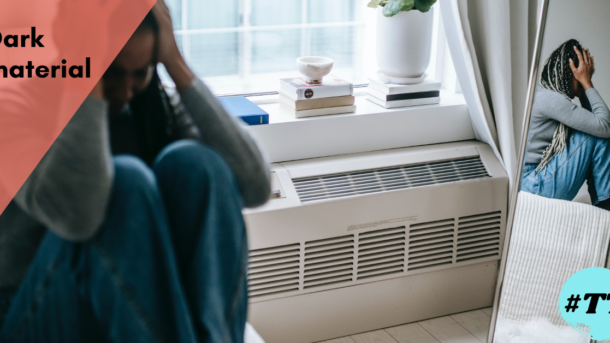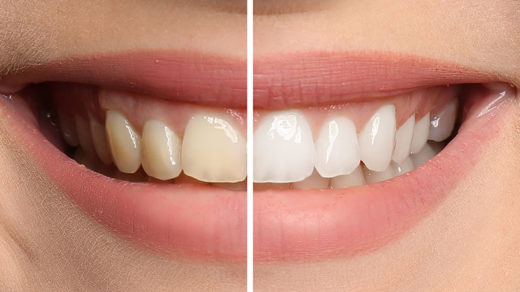
Today I want to talk about “dark material,” which is the term I use for the parts of ourselves that we consider bad, broken, wrong, or unlovable.
My client Emily, a financial advisor in NYC, is super healthy, fit, strong, and active, but lives in a larger body that she felt made her look like someone who was lazy and sedentary.
We started working together because Emily had been agonizing about her weight, trying desperately for decades to lose it, and struggling with intense self-hatred when she looked in the mirror.
When I asked why it felt so important to be smaller, she said that she just really wanted people to know she wasn’t lazy. Interesting.
“What does it mean to be lazy?” I asked her.
“It means like… sleeping in, not helping with chores, not thinking about others. It just means being bad.”
Apparently, Emily’s mother had considered “lazy” to be the worst thing a person could be, and used it frequently to insult Emily’s character as a person, often standing in for “selfish,” “stupid,” and “mean.”
Deep down, Emily wasn’t trying to prove to other people that she wasn’t lazy. She was trying to prove it to her mom– a voice which had become so internalized that it had become synonymous with herself.

Emily hated her body because it felt like “proof” that she was a lazy, bad person: a huge source of shame.
In order to help Emily dismantle this dark material, I gave her the assignment to embrace and lean into her lazy side.
I knew I couldn’t convince Emily that she wasn’t lazy, despite all the evidence, because it wasn’t her behaviors she was using as proof. It was what lived in the deep-down corners of her mind and heart that made her feel lazy. The mornings she wanted to sleep in. The urges to skip the gym. The desire to take a whole day to do nothing.
So what would happen if she actually let herself do all those things? If she faced her laziest self in the plain light of day, without hiding or curbing it?
Emily’s assignment was to be full out lazy for a week. As much as possible, I wanted her to honor every single lazy impulse: to lounge around, skip errands and workouts, sleep and rest, and be unproductive.
Emily expected this would lead to the most sedentary, unproductive, and shameful week of all time, but that didn’t turn out to be true. On days one and two, she told me that she felt guilty, but also really happy! She rested and did nothing, and even though she felt “bad,” part of her loved it. Day three was ok, and then on day four she was itching to get out and do something– move her body, be in the world, go on an adventure.
Day five, she went out for a long slow hike– not because it was productive or healthy, but because it sounded so freakin pleasant.

This is the important thing to understand about dark material: it’s never really true.
It may be based on some truths, but it’s always an exaggeration or hyperbole. The idea that there is a part of you deep down that could prove you’re bad, broken, or unworthy of love?? Absurd.
Once you challenge that out in the plain light of day, shame and dark material cannot survive.
Which makes leaning into and facing your darkest material one of the most powerful tools for overcoming it!
Of course, lots of our dark material is interwoven with trauma– the source of so much shame– so doing this kind of exercise may not be safe for you unless you have a qualified mental health professional there to help you process it.
And a lot of dark material is also the result of misinformation and stigma, like how a queer person might feel shame about their queerness not because queerness is bad or wrong, but because they internalized the stigma or shame taught to them by a queerphoic society.
But that’s actually just another reason why bringing your dark material out of the dark can be so healing: it gives you the opportunity to unpack the lies you learned, learn something new, and to connect with other people who feel or experience this.
Connecting with other people about the parts of yourself you learned would make them hate or abandon you is powerful.
Want to explore this for yourself? Start by brainstorming a big list of anything that causes you to feel shame, and anything you hate or reject about yourself.
-
What parts of yourself have you been keeping in the dark, because they feel so shameful?
-
What aspects of your mind, heart, body, or soul have you been rejecting, repressing, hiding, or trying to change, because you believe they make you unlovable?
-
What makes you feel like you’re bad, wrong, broken, or unworthy, as a person?
-
How does feeling this way affect you, and what does it cost you to keep it rejected or hidden?
Once you have some dark material to work with, consider what it might look like to bring it out into the light of day– to lean into it, let it be free, face it directly, and/or share it with others?
And more importantly, consider how your life would be different if this dark material no longer had any power over you– if you no longer had to hide it, keep it secret, resist it, reject it, or try to change it?
Sending you a ball of sparkling light,
Jessi Kneeland
Please follow and like us:







